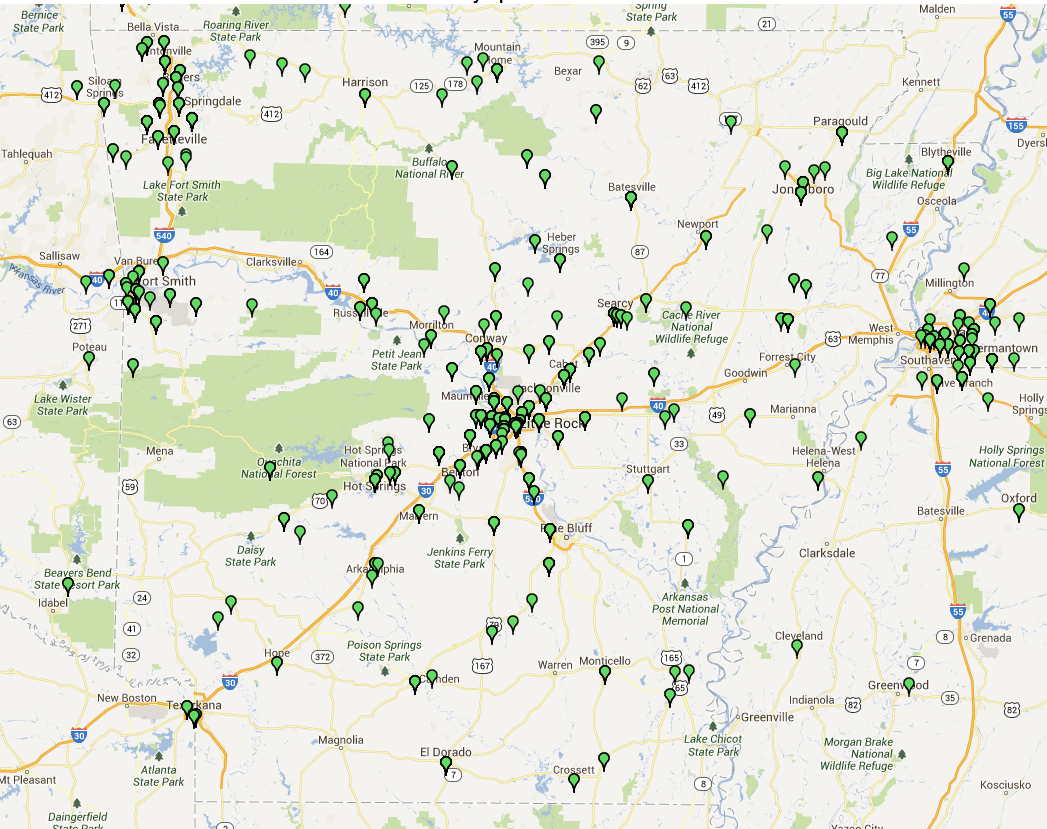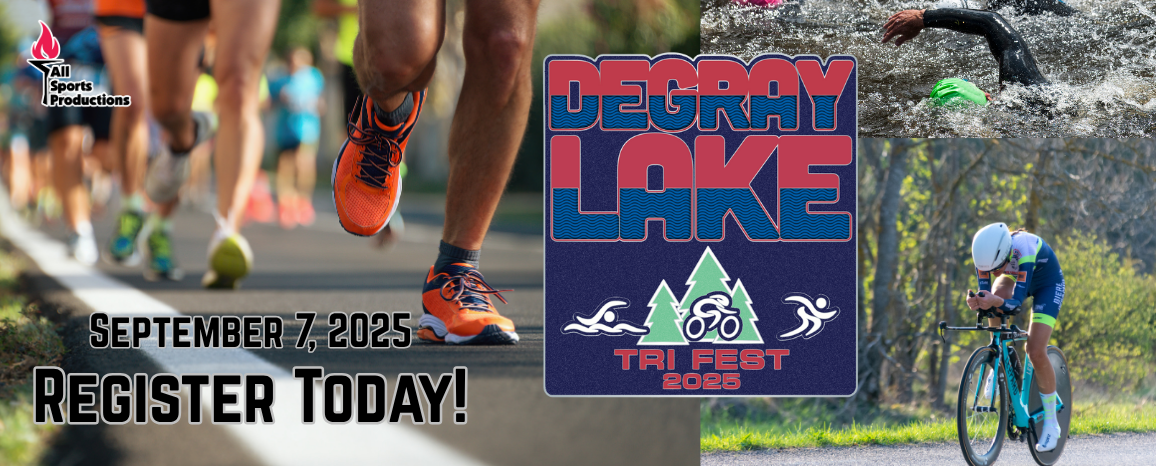It’s hard to tell where all the bikes that were ridden in the 2013 Big Dam Bridge 100 were from but we do have an idea of where the riders came from. It’s also tough to figure out the actual economic impact of an event of this size but let’s think about a few things.
First, between all the rides from the 15 mile to the 100 mile there were 2,746 participants. That’s over 5000 pedals, 5000 wheels, 5000 tires (if you figure everyone had at least one spare tube it’s over 7500 tubes). We also know that about 76% were from all over Arkansas. Here is a map to show how spread out they were around the state:

You can see that many of these folks would have opted for an overnight stay in central Arkansas.
So how about that other 24%? They came from 31 other states plus two other countries, not a bad pull to ride our little ride. Here is a map to see how they spread out:

Now let’s assume some things about spending. (I’m guessing very conservatively here)
- Let’s say 40% spent at least one night at $110 a night – That’s $120,824.
- Let’s say 60% bought at least 2 meals in local restaurants at $20 each – $65,904
- I’m going to assume an average of one tank of gas per participant spent on gas while in Arkansas at $45 per tank – $123,615
- I’m throwing in an average of $50 per Arkansas rider spent on getting their bikes ready either at local shops or buying parts for the ride – $104,650
- We’ll put each participant down for $40 for registration fees – $109,880
- Now throw in local taxes paid, souvenir purchases, other shopping, spending of support/family members etc. – $250,000
By these admittedly conservative numbers that’s over Three-quarters of a million dollars of direct economic impact.
Now for the bigger impact
We had some special guests for the ride this year, most notable to cyclists, George Hincapie, a popular Tour de France athlete who made the entire ride with some of the local riders. His presence will pay dividends in the future as cyclists across the country who follow George (yes, he’s a bit of a rock star) hear about the Big Dam Bridge 100.
But wait, there’s more. Peter Flax, editor of Bicycling Magazine was also in attendance. He also rode the entire route and seemed genuinely impressed with the cycling opportunities in Central Arkansas. He was coy about doing an article on Arkansas cycling in an upcoming issue but I can’t help but think that his experience will work it’s way into one of the most read cycling magazines in the country. Special thanks to Tony Karklins at Orbea for bringing him here and also thanks to Michael Chaffin at the Capital Hotel for heading up hospitality for Peter.

The Big Dam Bridge 100 is quickly becoming a signature event in Arkansas and if properly nurtured can grow to be a signature event in the country. It’s going to take a lot of work going forward, it will take not only the local bicycling community but also local, regional and state government support and business support to one day put 5,000 to 10,000 bikes on the ride. I’ll let you figure out all the math on that but I guarantee, it’s a goal worth achieving.







One Response
Appreciate this summary! Really puts things into perspective for the growing cycling community!!